History is being written in front of our very eyes. Or to be more precise, there are still way too many football fans who don’t know what is going on in Norway. There is a small club with a stadium of over 8,500 capacity that sets record after record. Bodo/Glimt have already amused Norway and they start to catch the attention of people outside of the country.
This tactical analysis will be dedicated to the beauties of entertaining, attacking football. We aim to show how an organized and physically prepared team could stir up the Eliteserien with simple but very powerful and effective ideas. We will look at the main reasons why Glimt could dominate so far and score a record-breaking 30 goals in seven rounds.
Steady starters
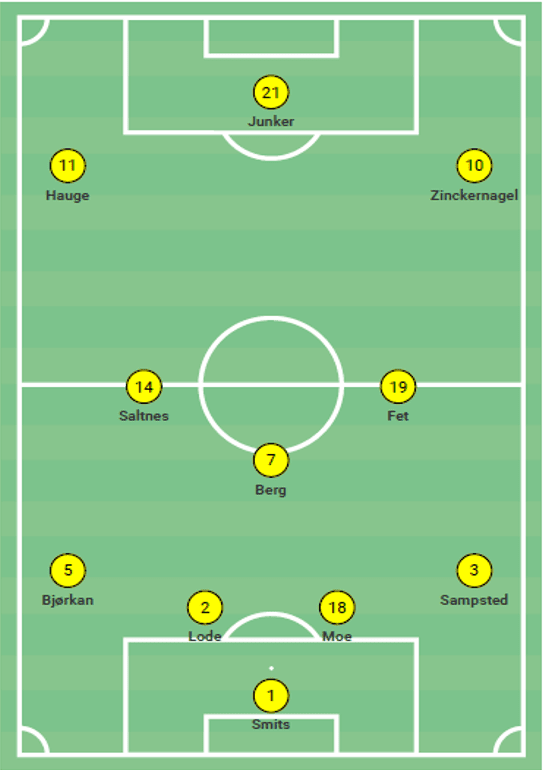
The team has a strong core of players, a perfect balance between youth and experience. Kjetil Knutsen prefers a solid and steady starting eleven in a 4-3-3 formation. Joshua Smits arrived from Almere this year but the goalkeeper adapted well to the league and kept two clean sheets in the process. In front of him, an experienced centre-back pair lines up with a forming partnership. Marius Lode and Brede Moe have an established partnership of three years and their passing connection is more than reliable. On the flanks, two young full-backs guard the opposition wingers, Alfons Sampsted on the right and Fredrik Bjorkan on the left.
In front of them, the midfield is a state of art. The three central midfielders complement each other greatly, Young Patrick Berg’s main role is to help out in the build-up and rotate with centre-backs in possession. On the right, Sondre Fet covers the right half-space and moves between the lines while on the left, Ulrik Saltnes offers help in the pressing as well as in the final third.
The front three includes two of the most in-form wingers right now, both with calibre to feature in the top five leagues. This is Philip Zinckernagel, a quick, intelligent dribbler on the right and Jens Hauge, one of the biggest young talents in the Eliteserien right now on the left. In the middle, Kasper Junker holds up the balls and gets on the end of low crosses effectively. Let’s see how the tactics could bring the maximum out of each.
Build-up against counter-pressing
In seven games, Bodo/Glimt have already faced various forms of defences but they unlocked them ferociously. As a general observation, they play better against counter-pressing but they have effective tools to unlock low-blocks as well.
The match against Brann Bergen was the perfect example of why it is almost impossible to press the defensive line of Glimt. One reason lies in the centre-backs. They are incredibly secure with the ball and not afraid to bring it out from the back. Many times, we can see Lode or Moe switching gears and progress the ball with great composure to the middle third. We cannot avoid mentioning Marius Hoibraaten, the club’s third centre-back, who is just as good at neutralizing the pressing by himself as his teammates.
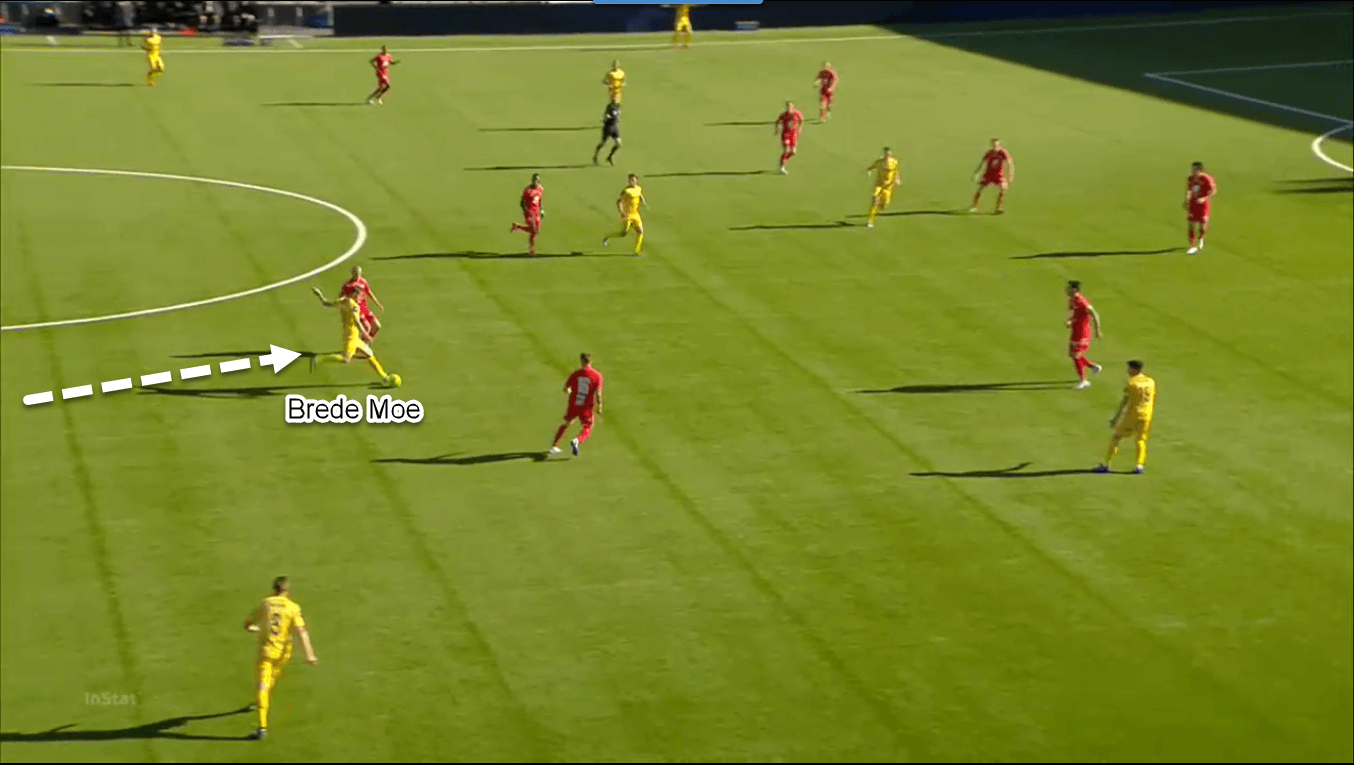
If this is not possible due to the lack of space on the pitch, Knutsen’s genius comes into play. Inviting the pressing from the opponent is a risky movement but can open up huge spaces behind the midline. Berg drops deep between the centre-backs. The ball-near midfielder provides an option to the centre-back while on the opposite side, the other midfielder follows along as well. Already five players and we haven’t even counted the full-backs. Their wide positioning helps to pin the opposition wingers and prevent them from pressing the centre-backs. It is also interesting to notice that the team tries to avoid using them in the build-up, this way, the opposition cannot set easy pressing traps on the wings. The team always aims to progress the ball vertically to a dropping central midfielder first who then has enough teammates around to play short combinations.
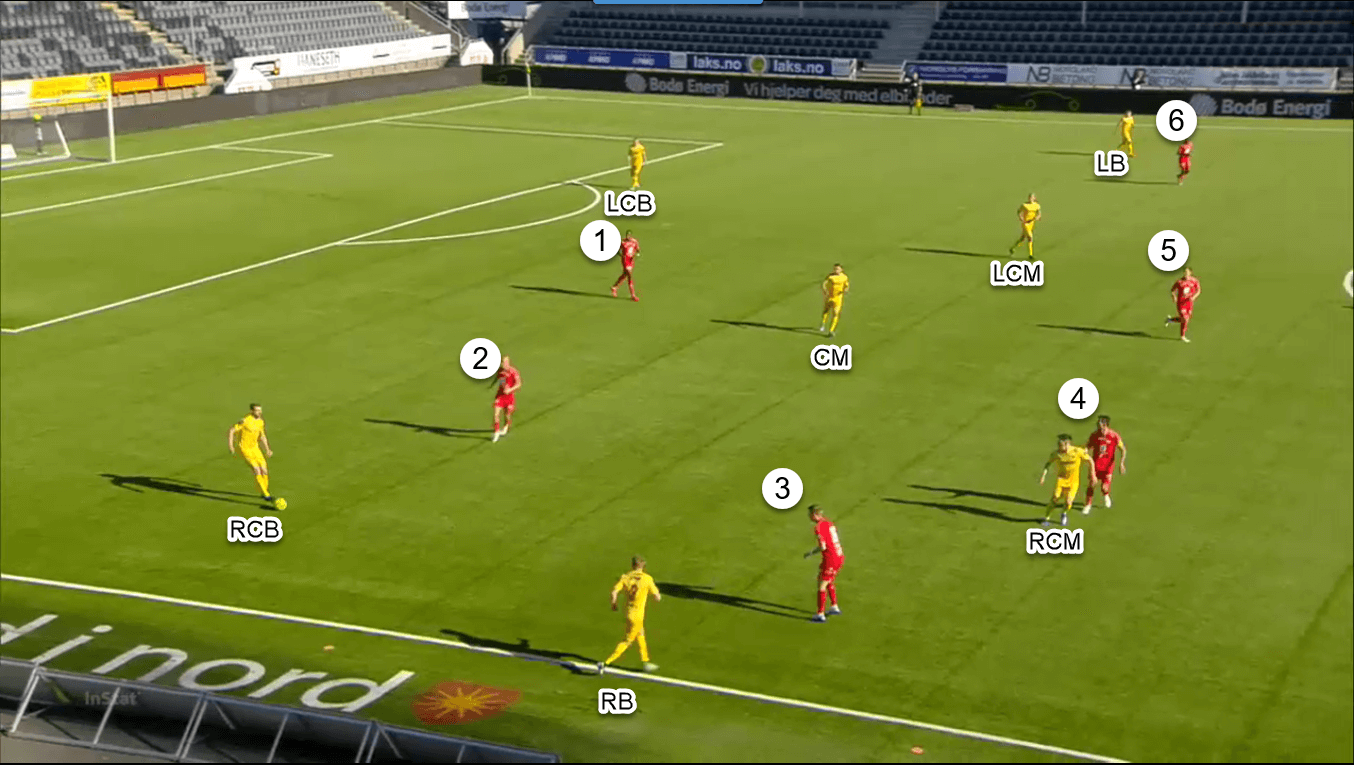
If the tight man-marking prevents them from doing so, the front line comes into action. Hauge or Zinckernagel thrives in the void left behind by the pressing midfielders. The situation can leave them and Junker with the four defenders which is practically a finishing training for them. Either the ball-near winger drops back for the through ball or they chase a long ball behind the defensive line.
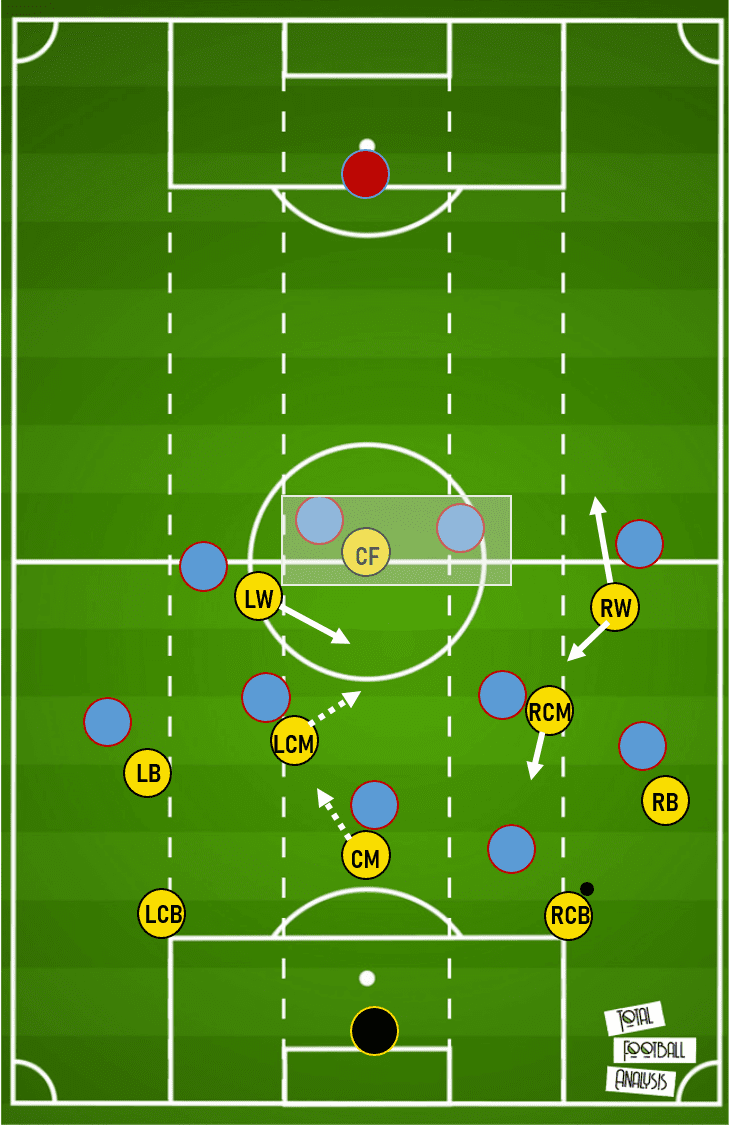
It is easy to see that Glimt have two main concepts. Due to the numerical advantage, they will try to bring the ball forward through short combinations or thanks to brave centre-back runs. If this doesn’t work because the first line of pressing is effective, they can still exploit the free space between midfielders and the defensive line or behind the high line of engagement. Eventually, they will penetrate the counter-pressing and the opponent will find themselves short in numbers.
Unlocking the low-block
Teams have studied the style of Glimt, therefore opted for a more careful approach. Sarpsborg or Aalesund were good examples so far but with different results. In this section of the scout report, we will follow through the methods in tactics that Glimt used to break the deadlock against these very low and compact defences.
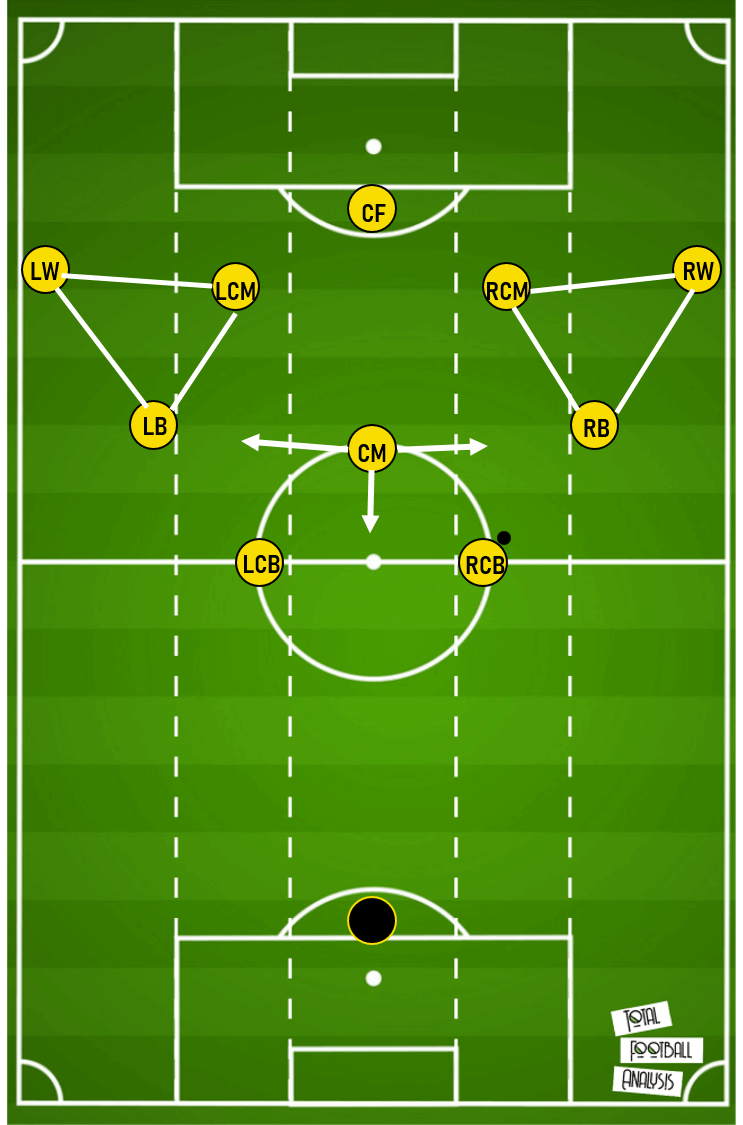
The formation is unique and allows the team great freedom in the final third. The centre-backs push high up the pitch, often deep in the opponent’s territory. Next to them, the full-backs’ position is also fixed, they stay closer offering short option to the backs. On the midfield, Berg has a free-roaming role, he connects the team side-to-side or when a centre-back brings the ball forward, he rotates and covers for him. The other two midfielders, Saltnes and Fet have the same important task. Pinning the defensive line to their place. They take up advanced positions in the half-spaces and act as withdrawn strikers. The two wingers usually hug the line as they are the widest players on the pitch and from there, they can cut inside towards the goal. Junker as the lone centre-forward keeps the centre-backs busy and stays the highest player in the attack.
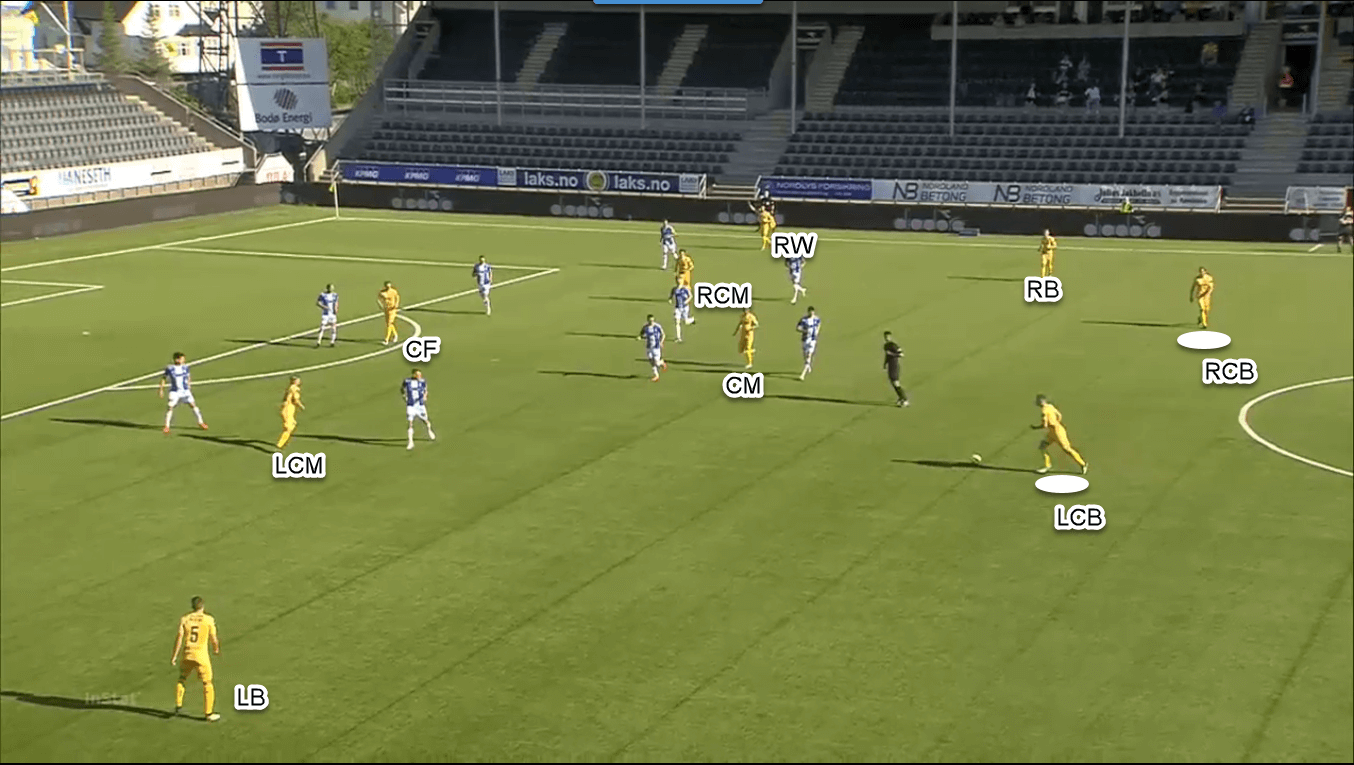
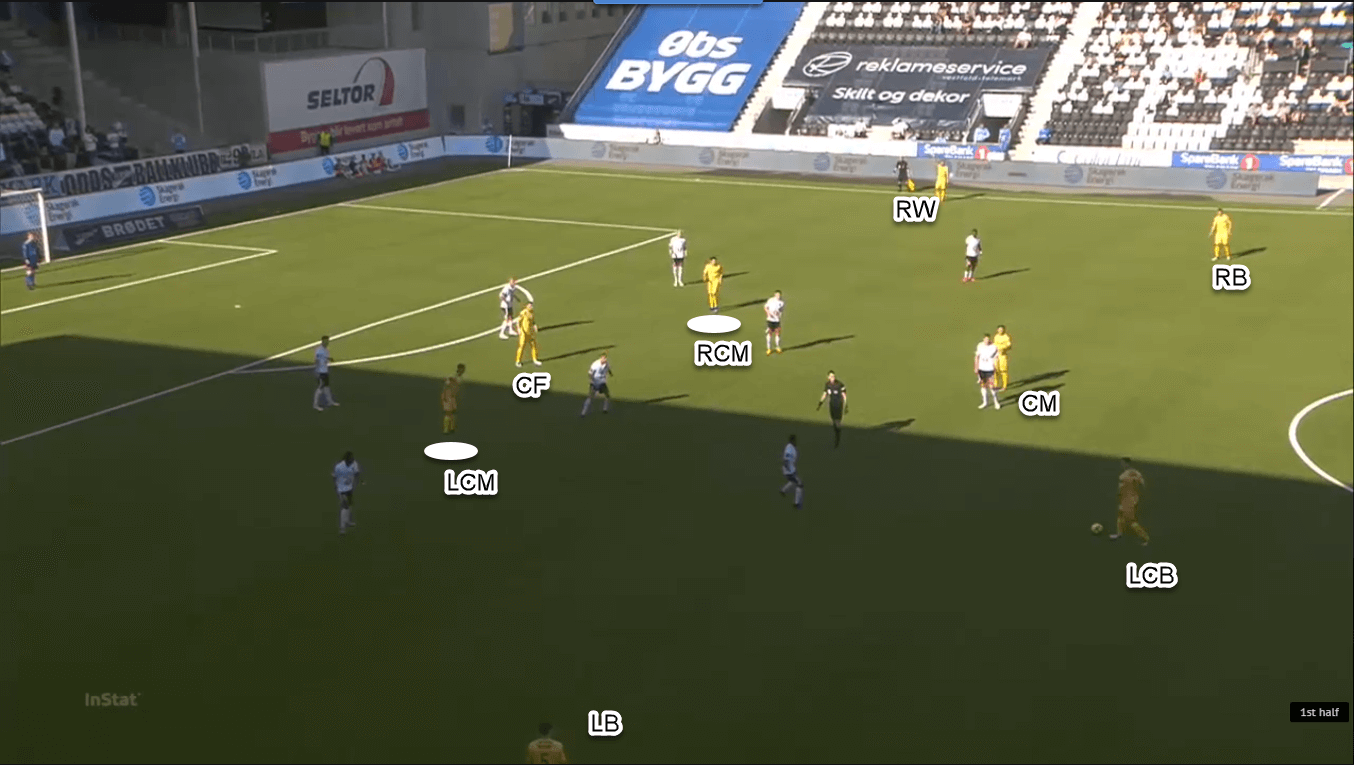
The full-back – same-side central midfielder – winger triangle provides the freedom necessary for shaking up defences. The use of positional rotation on the wings is not a new concept, however, Glimt does it automatically, almost robotically. The players always take up certain positions near the box and they switch with clockwork precision. The addition of Berg to this triangle makes it almost impossible to force them out of dangerous zones. The creativity of Hauge and Zinckernagel allows the team to move forward.
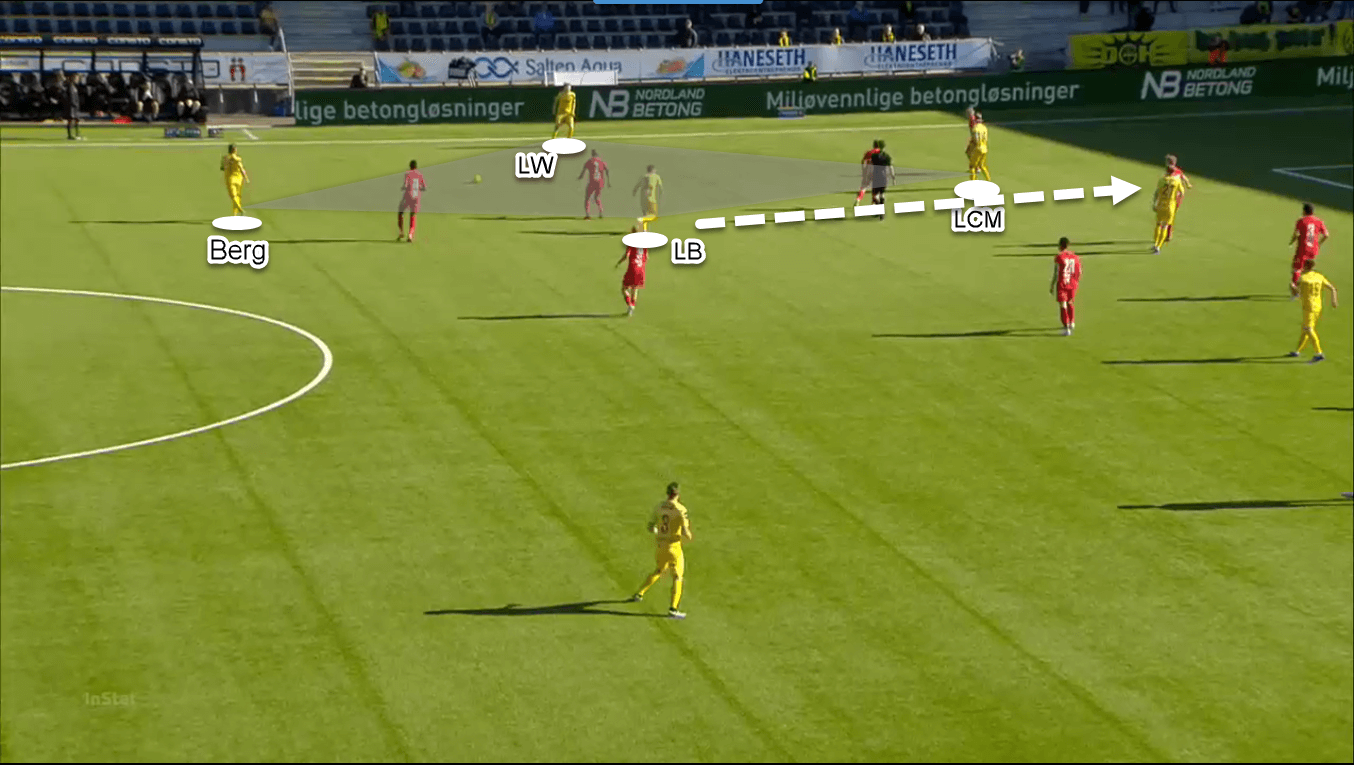
The openings on the wings result in penetrating runs from the aforementioned players and that is where the importance of Fet and Saltnes comes in as well. Since they lurk just outside of the box in the build-up, they have a prime chance to locate the low cutback crosses. Hauge has a cutback percentage of 55% so, from the left, there is always Saltnes or Junker waiting for the ball on the edge of the six-yard box. From the right, regular crosses are more expected or strong, driven crosses towards the middle Arriving as the second wave of attack helps to overload the box and forces error from the opponent in marking.
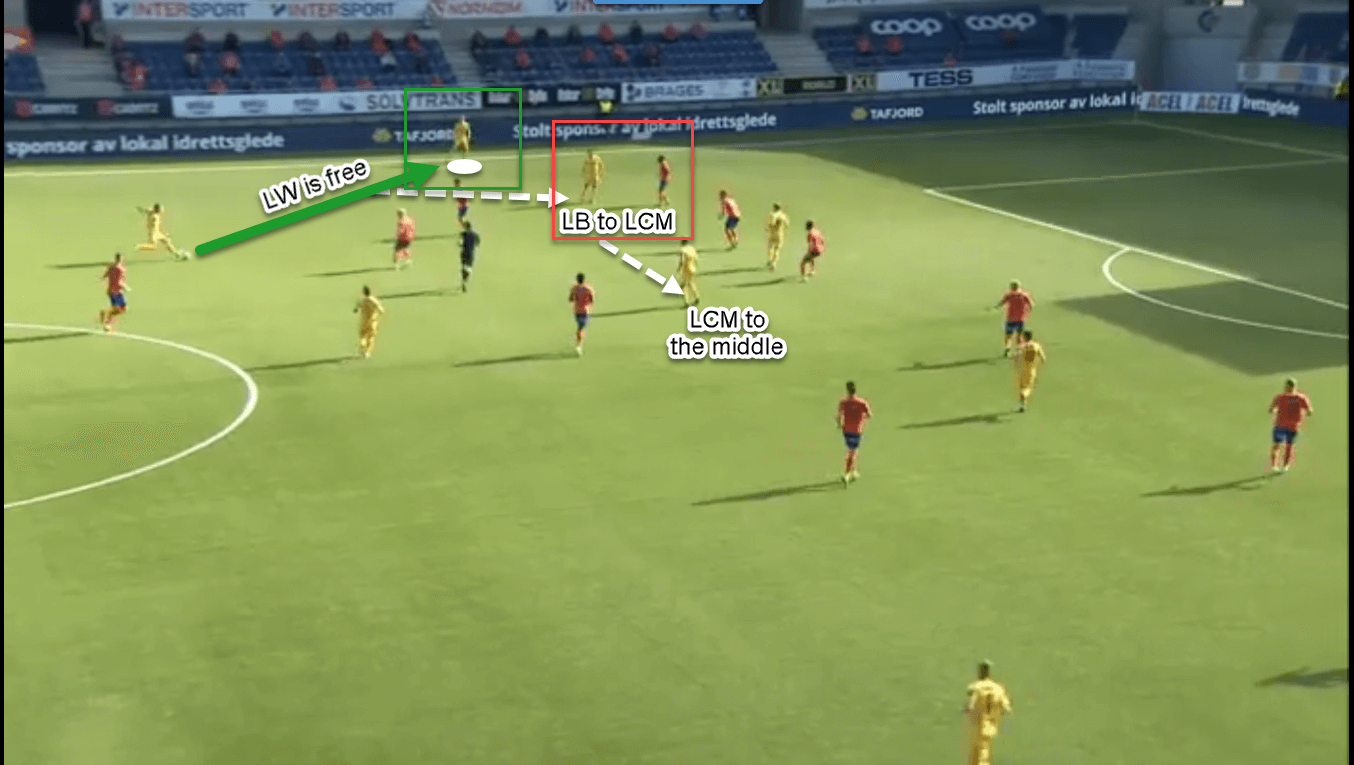
In transition
The 62% average possession and the nearly 90% pass accuracy suggest that Bodo/Glimt will always try and dictate the tempo. This comes with the urgency to press the opponent when they lose the ball. Their 9.9 PPDA in the 4-3-3 formation could be considered average in Europe but it is enough to unsettle the defensive lines. As a general rule of thumb, pressing should last for five seconds before the team gets back to their normal shape. The front six (three midfielders, three attackers) often presses for more than ten seconds which is based on great physical preparation. This way, Glimt don’t let any breathing space for the opposition and they can continue all game long.
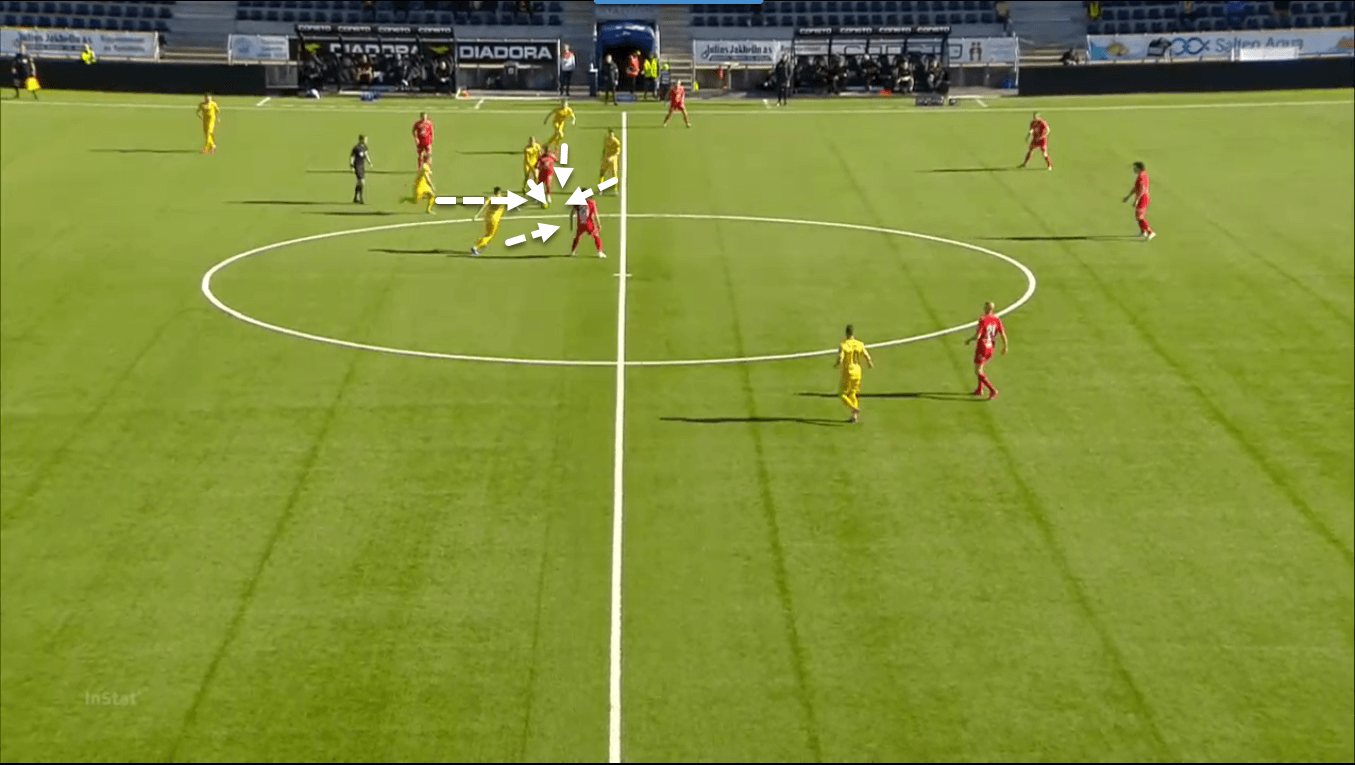
The defence
As the transitioning proceeds, the team rearranges the lines and gets ready to set up easy passing traps. This is achieved by the different angles of pressing. First, the team orients the centre-back towards the side with one attacker cutting away the connection towards the other centre-back and the goalkeeper. The winger and the midfielder on that side cover options towards the centre, therefore the defender has no other chance but launching long balls forward. If the opposition winger tries to drop deeper, the full-back (Sampsted or Bjorkan) follows.
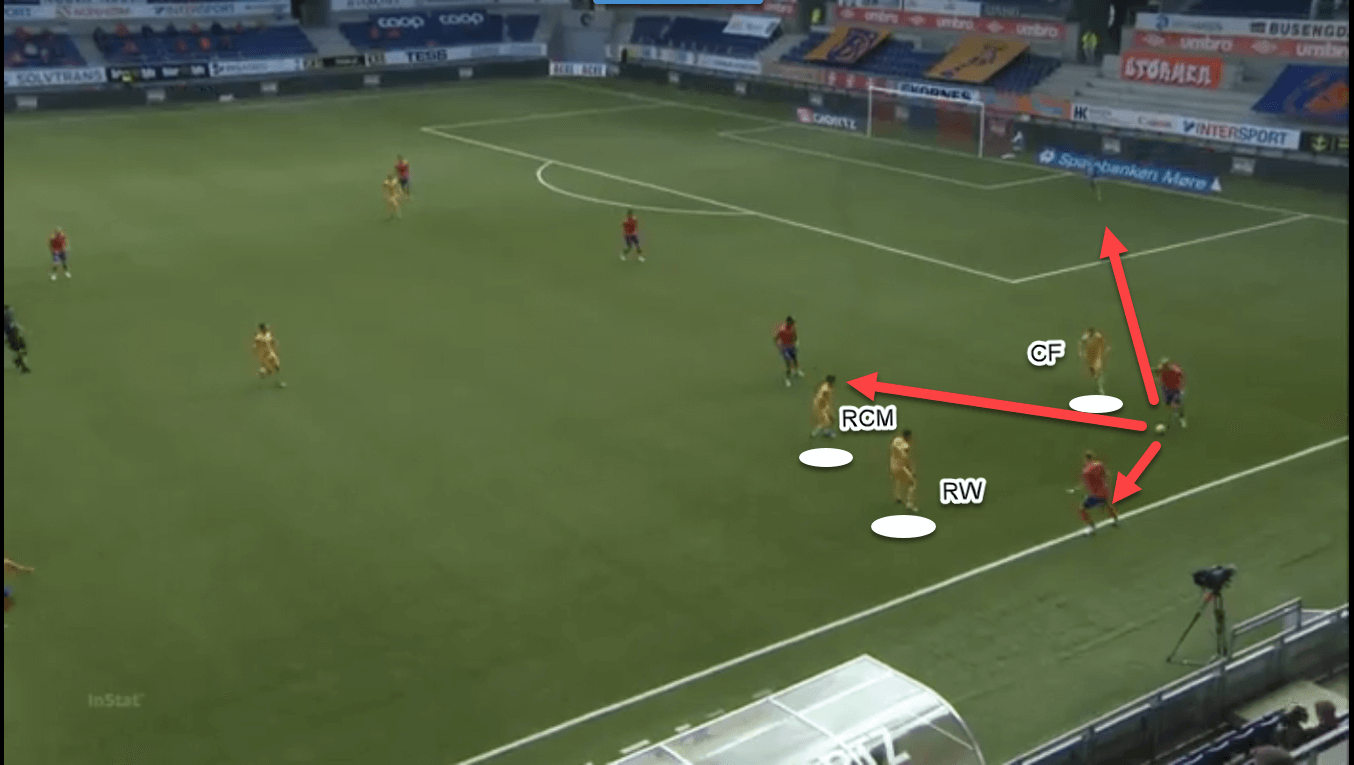
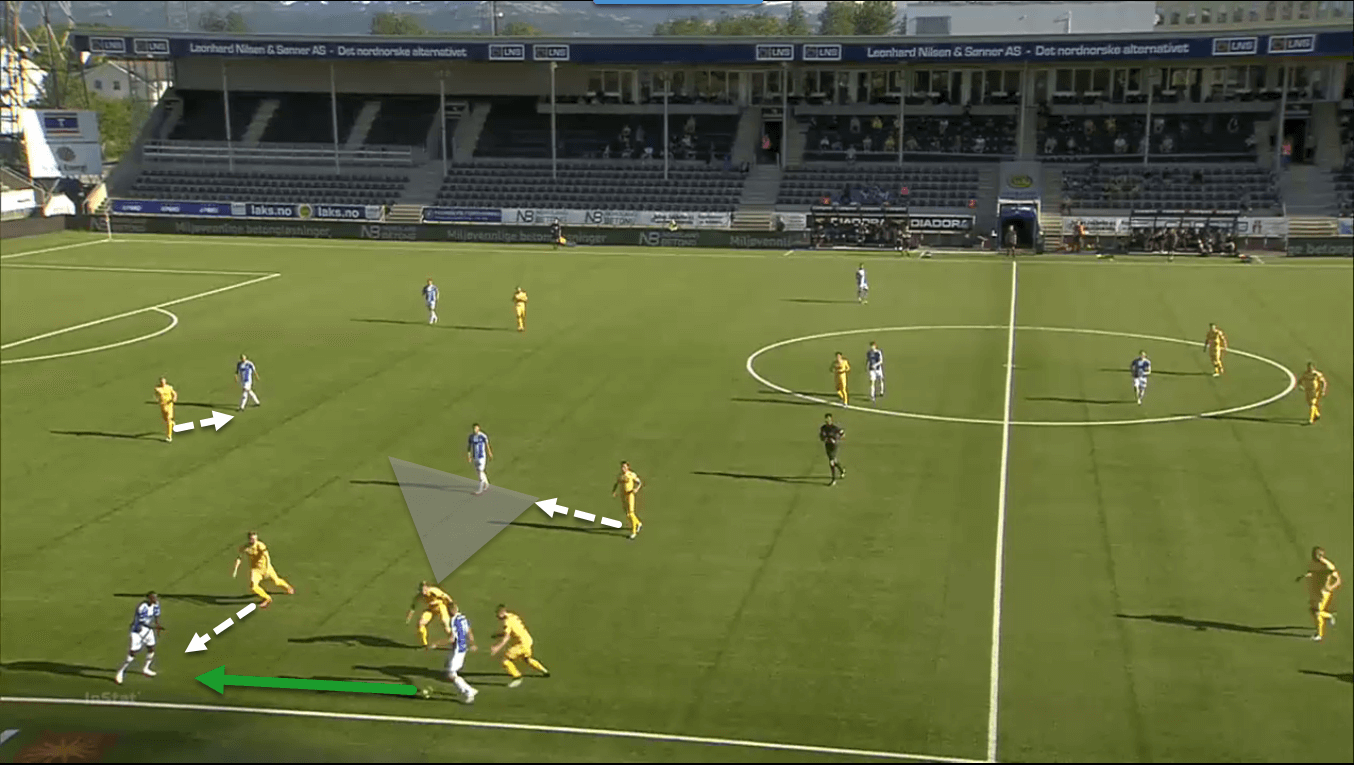
When the pressing is not successful after the goal-kick, Glimt will form a 4-5-1/4-4-2 shape in defence. Usually, it is Saltnes who joins Junker in the secondary pressing and pushes ahead of the midline. Hauge covers for him as he drops to his place. The team concedes crosses above-average as they close down the centre well. They can cope with these balls coming into the box but sometimes they are beaten by more physical players.
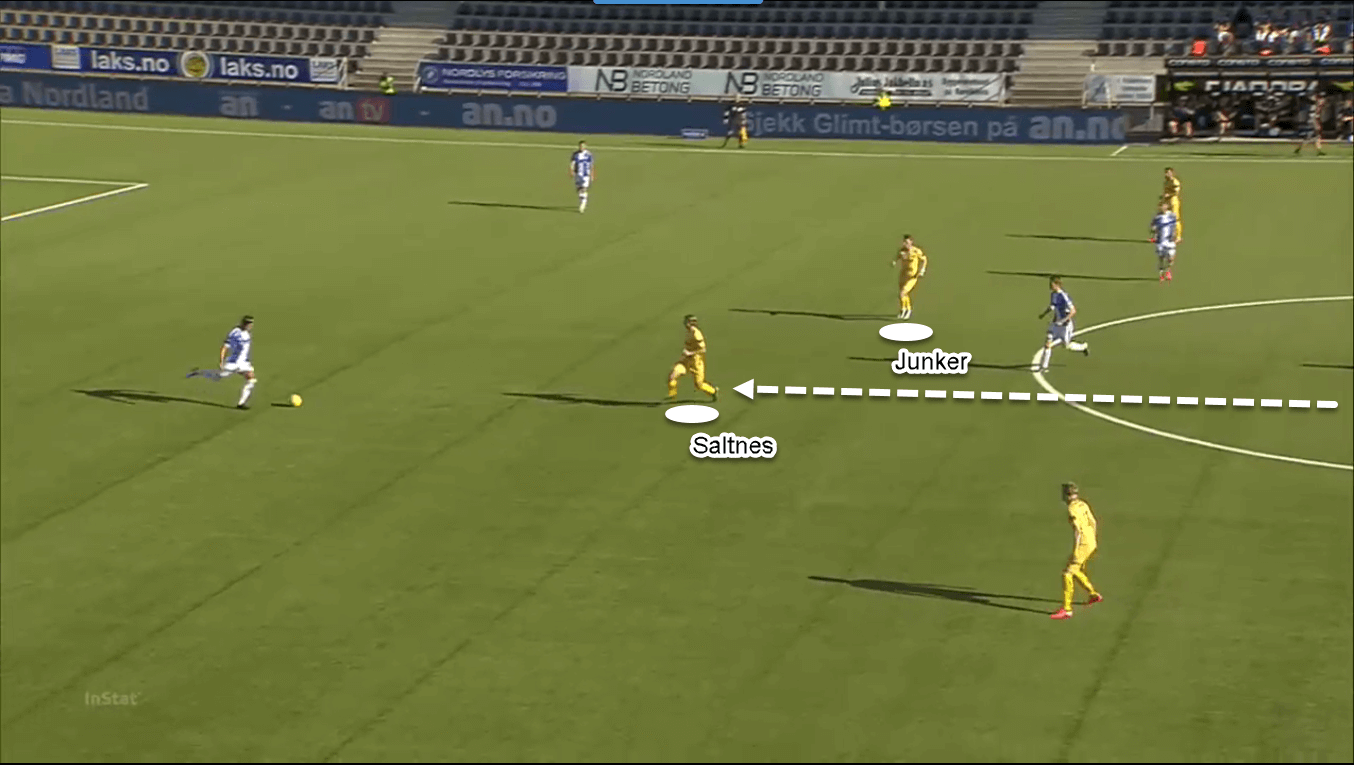
Can anyone stop them?
In this part of the analysis, we will try to find a solution whether Bodo/Glimt can be defeated. In our opinion, there are two crucial elements which would significantly increase the chances of winning against them. The following tactics are just illustrations in a fluid, non-pressing 4-2-3-1 formation.
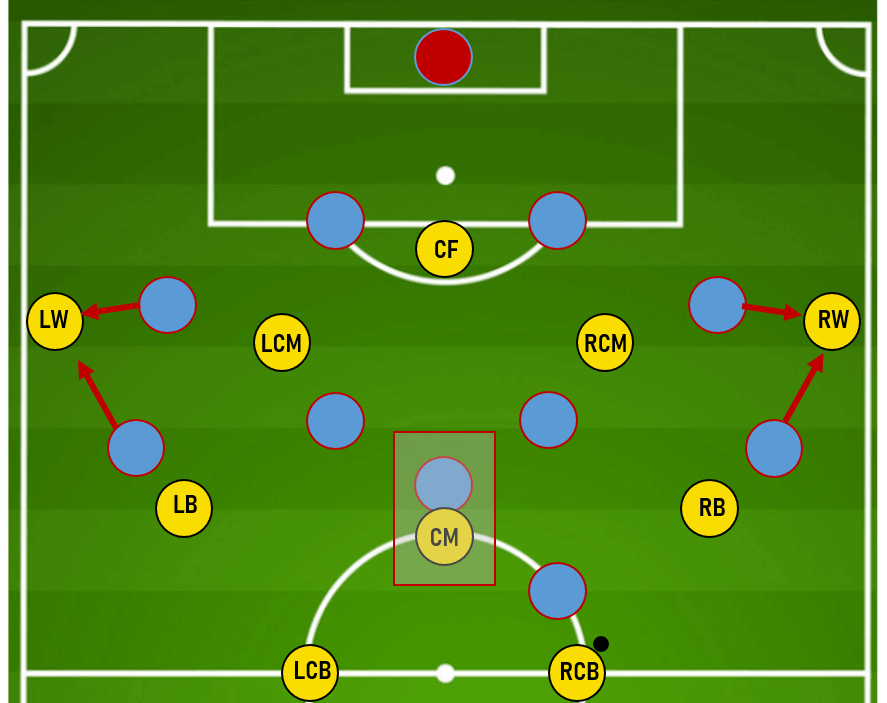
Marking Patrick Berg. He is the brain on the pitch, constantly in movement. He connects the whole team and so far, none of the teams managed to mark him adequately. Shadowing his movements could limit his participation in the build-up. This could be solved with a three-man midfield where each of them has a zone where Berg should be marked. If he moves towards the left-flank for example, the right-sided midfielder could switch to him while the central midfielder would rotate back to his place. This is important because Saltnes and Fet still need to be contained.
Isolating Hauge and Zinckernagel. This is easier to be said than done. Our idea would be keeping our wingers wide, in line with the two defensive midfielders. Glimt full-backs would be allowed to receive passes uncontested but they could only progress the ball towards the middle. If carried out successfully, the two wingers could have access to full-backs of Glimt but also to the left and right central midfielders while cover-shadowing Haugen and Zinckernagel.
Bodo/Glimt would try to unlock this defence with brave centre-back runs into pockets between the wing and the centre. This could be met by the winger and the striker collapsing the pocket while the striker would also orient the pass towards the full-back. Since Berg usually covers the runner, his marker could help out in trapping the flank, along with the full-back and the closest midfielder. This way, the wing could be isolated as Moe or Lode rarely follows up their runs and stay on the opposition half.


Conclusion
Bodo/Glimt could be the next ‘hipster’ club to follow and it is worth to do so. Their exciting attacking football should be shown in tutorial videos. Their build-up play against pressing, their positional rotation all hit the standard of European football. And in fact, it would be interesting to see them against other European clubs in the Champions League. Their young core of players is exceptional with Hauge being a Premier League-calibre winger while we believe that Berg could improve and easily move on to the Serie A. However the season will end, Bodo/Glimt already gifted us the joy of football after the restart and we cannot wait to see more of them.

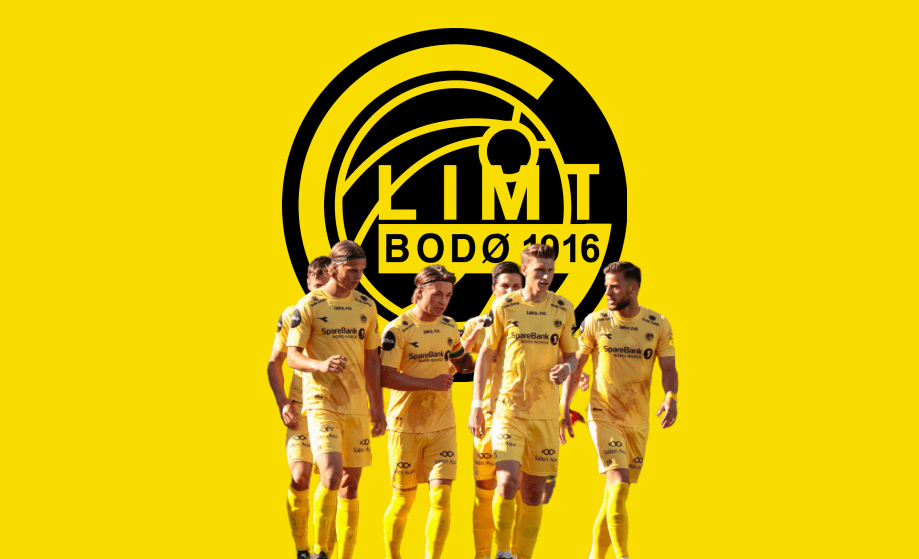



Comments